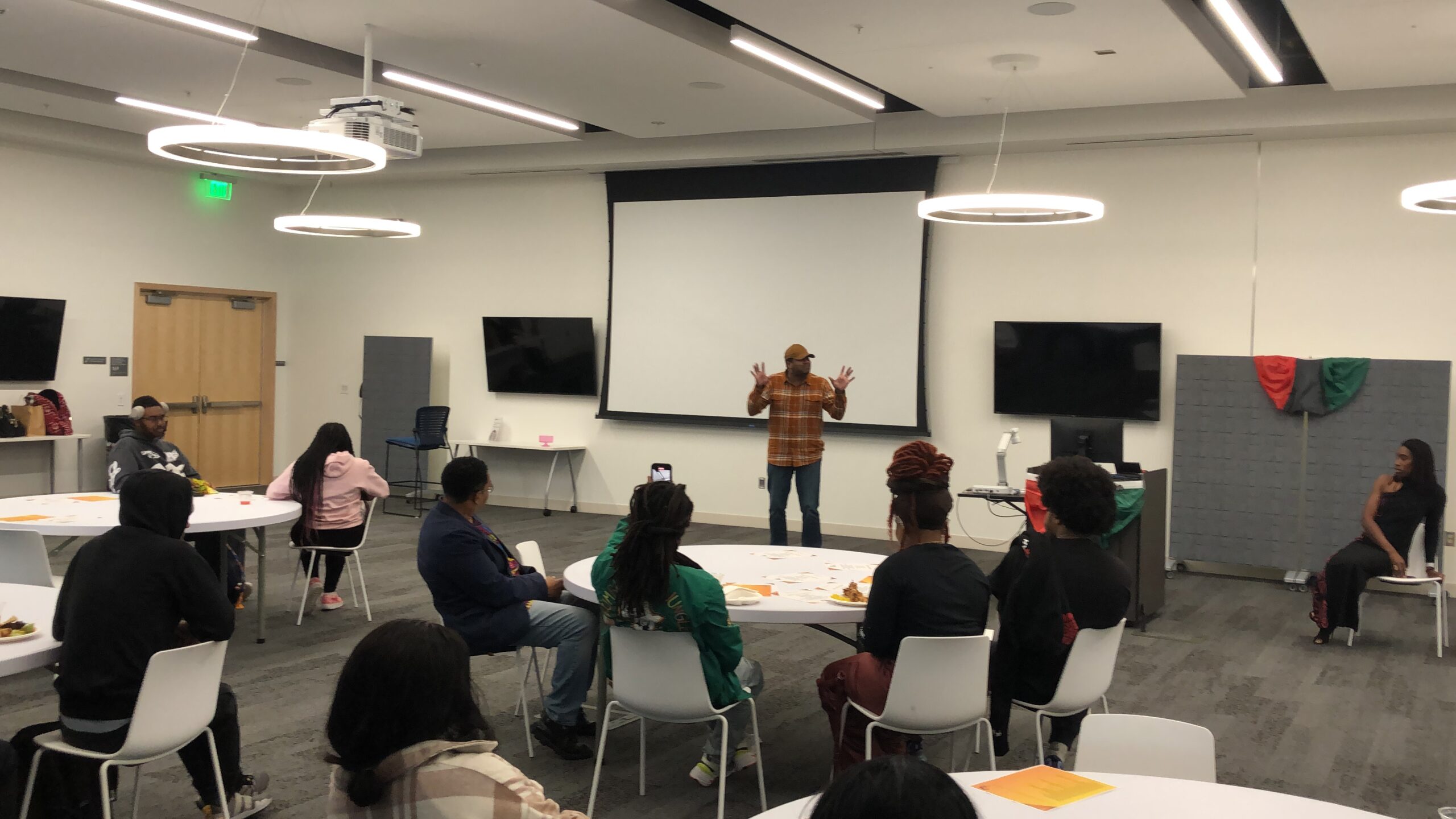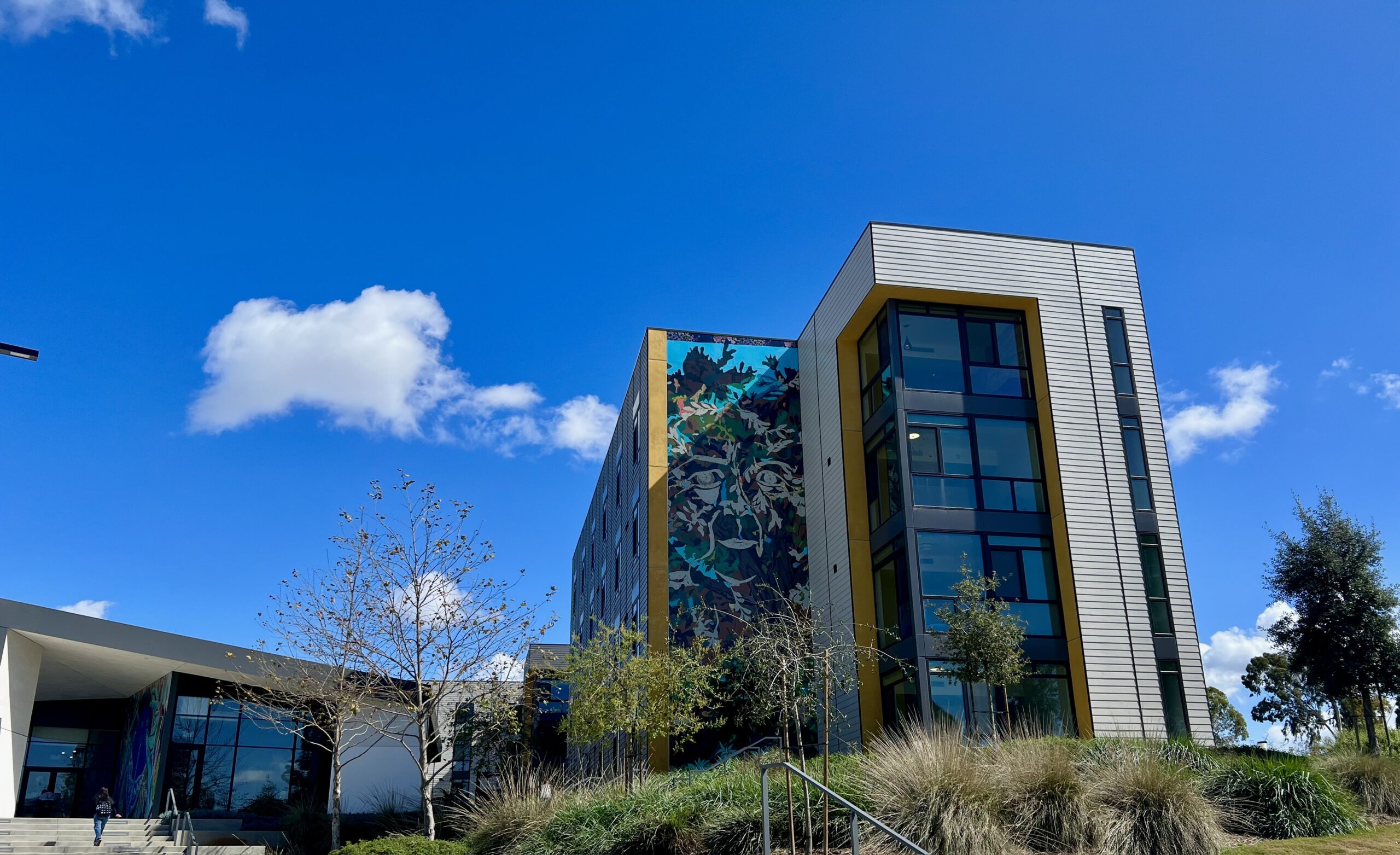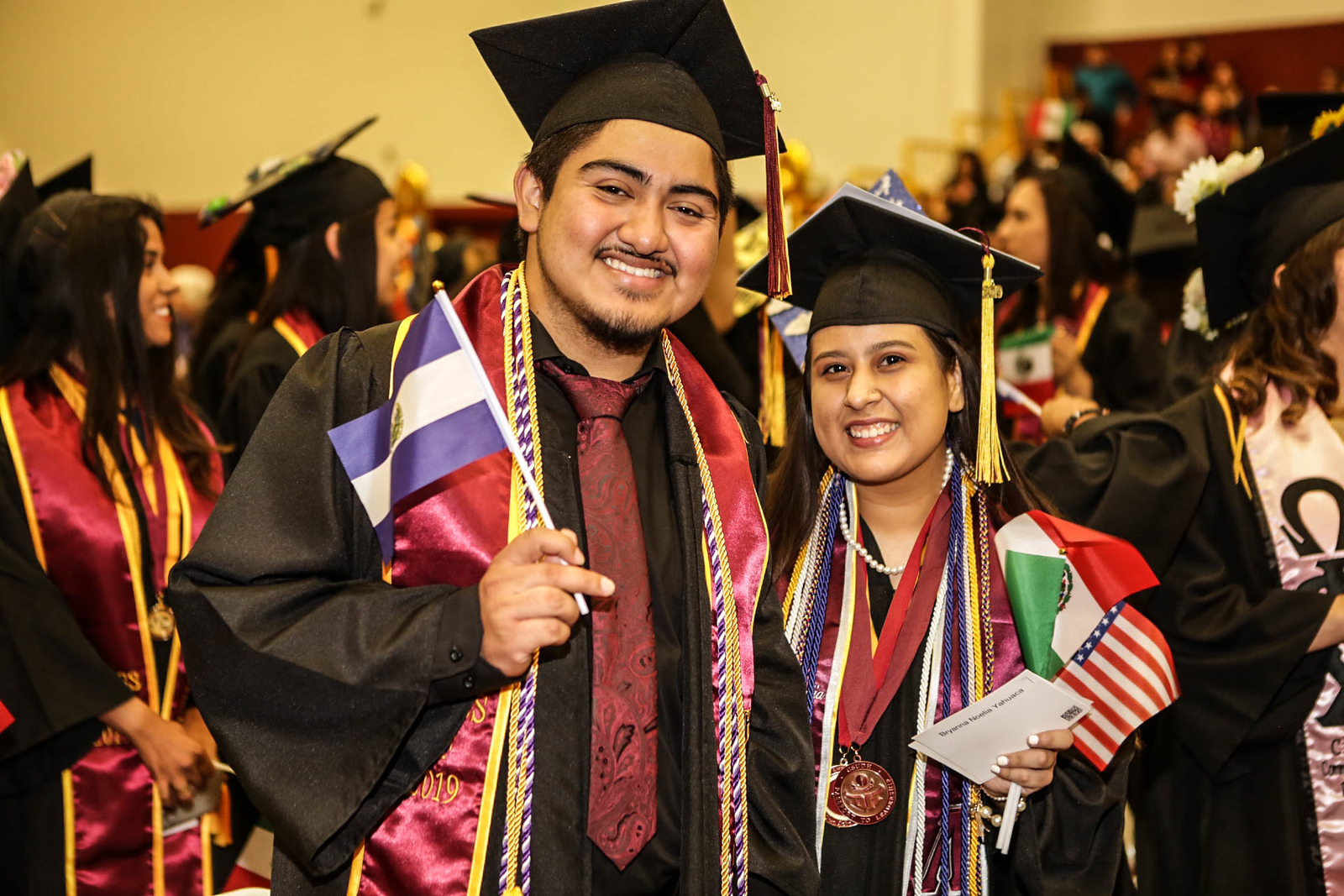Traditional art, spoken word, and storytelling celebrate culture and community
CSUDH commemorated the end of Black History Month with a closing ceremony on Feb. 29. The event, hosted by the Black Resource Center and the Department of Africana Studies, showcased Africana art in several forms, including dance, spoken word, and storytelling.
Attendees were welcomed to the ceremony by Trimaine Davis, the BRC’s interim program director. They were then invited to join in the singing of “Lift Every Voice and Sing.” The hymn is also referred to as the “Black National Anthem.”
Afterward, Africana Studies professor Salim Faraji held a libation ceremony to pay homage to ancestors. Samual Simmons, a CSUDH alumnus, performed a spoken word poem; this was followed by storytelling by Queen Mother Willis and Pastor Guy Witherspoon who represented elders within the community with stories of their own to share with students.
Storytelling plays a critical role in cultural preservation, according to Davis, who said it’s how communities pass down their history from generation to generation.
“That’s something where our students nowadays can draw inspiration from,” Davis said.
Senior art student Jenesis Sears was one student who had her traditional artwork displayed. Digital art was also showcased as well as a video tribute to actor Chadwick Boseman. Sears noted the importance of showcasing various kinds of creative projects on different aspects of Black history and culture.
“Black people are not monolithic,” Sears said. “We have different tastes, we have different kinds of music, artistry, languages, everything really. It’s important to just celebrate us as we are.”
The art showcased during the ceremony represented Africana culture and showed the ways in which Black stories are told.
“We wanted to highlight those things because too often nowadays in our society when we’re talking about art and representation, there is a lot of negative conversation that comes along with that.” Davis said.
There were nineteen events produced for Black History Month this year. Davis described the series as “phenomenal,” adding that each of the programs hosted in February catered to different aspects of the student population. Some of the programs included a lecture series on historical events and talent and artistry showcases.
Some of these programs were hosted in collaboration with other campus organizations such as the Queer Culture & Resource Center and the Latinx Cultural Resource Center. The collaboration demonstrated “true partnership,” according to Davis.
“I think that’s the beauty of Black History Month, too, it doesn’t necessarily have to be programs coming from us,” he said. “Anybody can partake because Black History touches every aspect of who we are as people.”
Black History Month may be over officially, but the celebration of Black culture and achievement continues at Dominguez Hills. Junior art student Armand Egere said the impact of Black history extends far beyond February, because “every day is Black history.”
“Black students on every college campus – every high school campus, every school in general – they are a part of Black history because Black kids going to school was never a part of American history.” Egere said. “Every day, we are making history just by being present in school – in artistry, in sports, just making groundbreaking steps to break those societal norms that used to hold us back in the past.”
Davis said students can look forward to upcoming programs from other campus organizations, including the Women’s Resource Center which will host events to commemorate women’s history this month. He added that Toros should also look out for future collaborations between the Black Resource Center and other departments.
“Just because Black History Month is over, doesn’t mean that we can’t keep highlighting people making black history,” Davis said. “That happens every day.”



